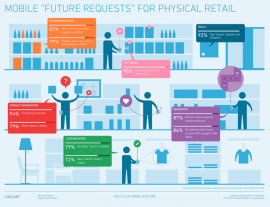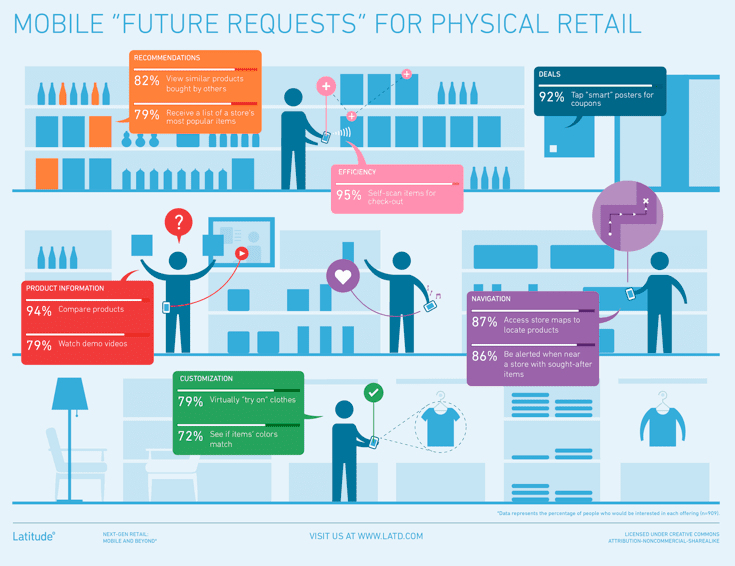5 Digital Marketing Strategies for offline SME/B success


SMEs/SMBs with offline businesses models can still utilise digital marketing
You would be forgiven for thinking that the days of bricks and mortar stores are numbered due to the rise of Internet shopping and dramatically increased usage of Smartphones to make purchases when on the move. Certainly, online shopping is fast becoming the norm as UK shoppers are expected to spend over £52 billion online by the end of 2015; an increase of over £7 billion on the 2014 figure.
Yet this only represents 15.2% of retail sales in the UK which is a clear indication that in-store shopping is still the consumer’s #1 choice. Even better news is that you can use digital marketing to boost your level of in-store customers! According to a Deloitte report, digital technology influenced approximately 33% of in-store retail sales in the United Kingdom during 2014; this equated to over £100 billion.
No matter how advanced online shopping becomes, a majority of customers will always want to physically see, touch and feel products before making a purchase; as at 2014 this accounted for 85% of consumers. Yet despite the power of the physical store, less than 20% of those who enter a store ultimately make a purchase.
Below, we look at ways in which you can use the power of digital marketing to drive prospects to your store where they become paying customers.
1 – Target Mobile Shoppers
Mobile accounts for around 40% of all online retail sales and an estimated 73% of UK shoppers said they would spend more on mobile in 2015; expect this figure to rise again in 2016.
A great way to take advantage of this is to utilise Near Field Communication (NFC) tags in store as a means of sharing offers and providing consumers with more detailed information such as information on whether the product is about to sell out.
2 – Print Publications
Don’t dismiss the power of print ads just because they can’t be linked back to your website; they are still valuable marketing tools. By all means go down the traditional route of getting placements in industry magazines and relevant journals but for best results, print ads need to be used in concert with other forms of communication.
If you want your print ads to be a real success, start spreading their content across digital media channels. For example, you can include them on an online version of a print publication and ‘share’ them on social media channels such as Facebook, LinkedIn and Twitter.
3 – Motivate Customers To Take Action
The modern consumer has an unimaginable choice so persuading them to choose your products/services over those of your rivals has become an exceedingly difficult task. One of the basic tenets of marketing is to provide a sense of ‘scarcity’; that is, make it seem as if there is a limited number of products/limited amount of time to avail of a special offer.
Christmas is the ideal time to do this because consumers only have ‘X’ amount of time to make their purchases. Be sure to stock your store with limited edition products, special gift sets etc. When consumers feel as if there are limits on inventory and time, their mind is quickly made up and they are compelled to take action.
Consider implementing this strategy for the year’s various events such as Valentine’s Day, Easter and Halloween by posting details of your offers on social media. Of course, you can still take advantage all year round by having ‘deadlines’ on particular discounts.
4 – Host In-Store Events
Another way to differentiate your SMB from everyone else is to host a number of events in your store; typically, it is best to host one major event and 2-3 minor ones annually. This is because organising these events takes time and resources and if you host too many events, they lose their impact.
Minor events should be quick and easy to organise and could consist of product demonstrations or short classes. Major events are big undertakings; an example would be a fashion show within your clothing store. These events are designed to not only attract customers but also make them part with their cash.
You can use digital marketing techniques to promote the event; as always, mentioning it on social media channels is mandatory and more details should be available on your website.
5 – Embrace Local SEO
According to Google’s research, in 2014 around 50% of consumers who performed a local search on their Smartphone visited the store in question within a day while 34% of those who performed the same local search on a laptop or desktop did the same.
Clearly, it’s in your best interests to pay attention to local SEO so make sure your SMB is listed on Google My Business and fill out your profile in full. When entering your Name, Business Phone Number and Address, make sure it is consistent across all channels. Check your social media profiles and website along with directory listings and review sites.
Conclusion
As we’ve already mentioned, the modern consumer is extremely well-prepared and demands the very best from retailers. In order to boost your brand reputation and attract tech-savvy customers, you need to provide access to a host of product information and social proof; a perfect example is having online reviews easily accessible within your store.
While mobile shopping is increasing rapidly, the majority of consumers still only use their Smartphones to ‘pre-shop’ and still want to make their purchases in a physical store. When your SMB engages in a digital marketing campaign, it is short-sighted in the extreme to focus on online sales only. By providing a good store locator, providing access to real-time in-store inventory and ensuring you have an excellent local SEO plan, you should be able to successfully drive consumers to the store through your online marketing efforts.
Thanks to Patrick Lynch for sharing his advice and opinions in this post. Patrick is a professional copywriter and has worked for clients from the United States, Australia, UAE, UK, Ireland, Germany and more. He has helped hundreds of SMEs achieve success in their content marketing campaigns by producing premium quality content that turns visitors into brand advocates. You can follow him on Twitter or connect on LinkedIn. Patrick also runs his own blog called Lynch The Writer.
From our sponsors: 5 Digital Marketing Strategies for offline SME/B success



